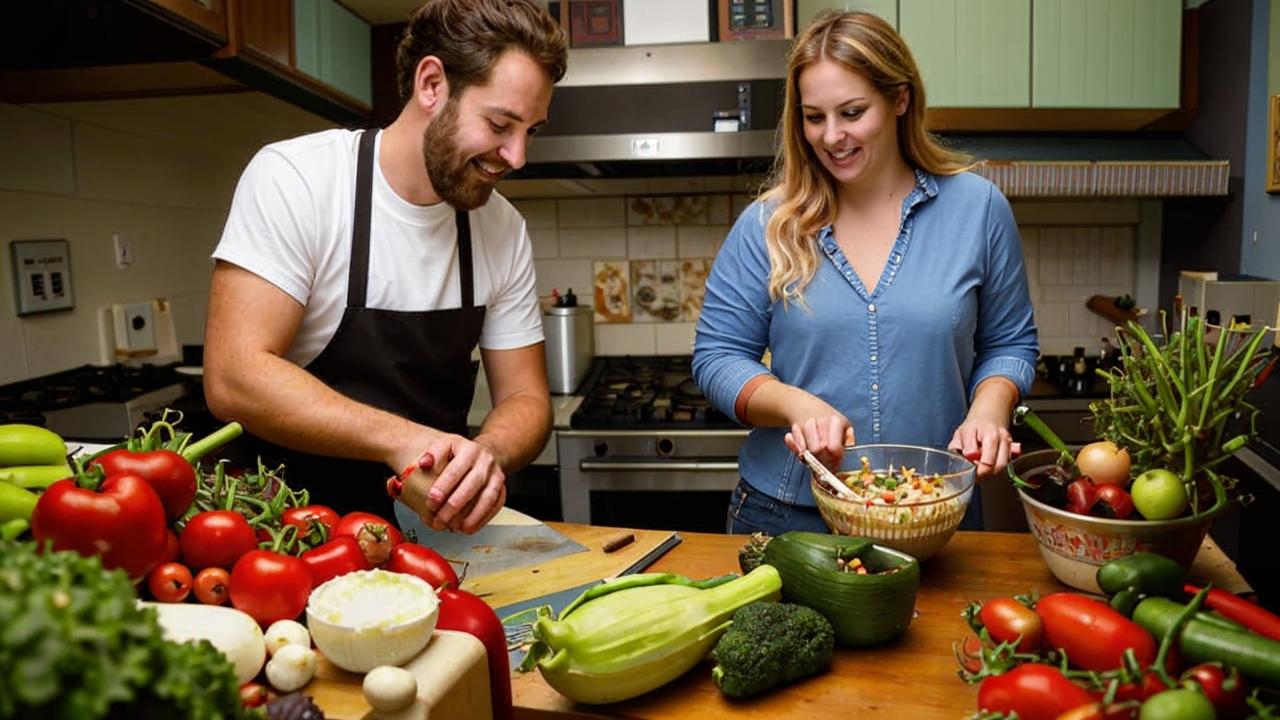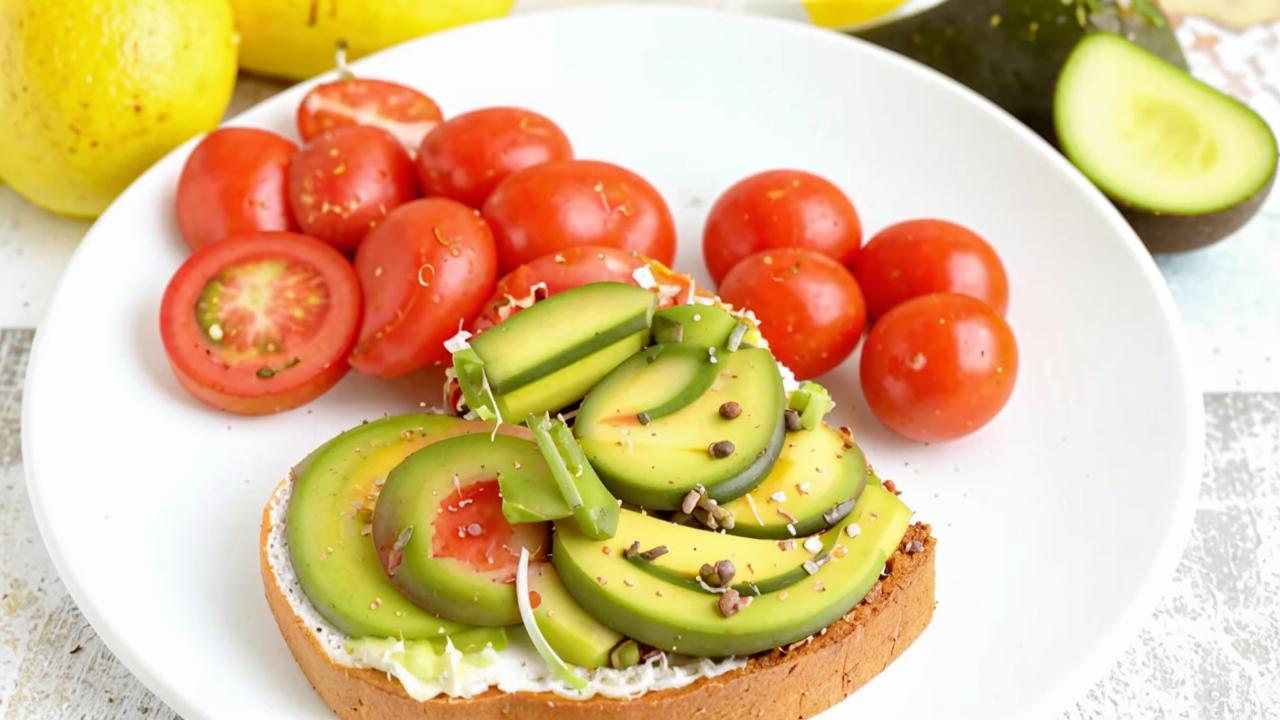During fasting, people deliberately give up certain foods for religious, ethical or dietary reasons. During Lent, you cannot eat meat, dairy products, eggs, fish, or other animal products.
However, this does not mean that such a diet should be boring or unbalanced. On the contrary, there are many delicious and nutritious recipes that can be prepared, adhering to the Lenten menu.

Doctor of nutrition, sports nutritionist, nephrologist of the Hadassah branch of the Hadassah Clinic
“The decision to fast should not naturally be related to weight loss, but to curbing the desire for tasty and abundant food.”
Health benefits of fasting
In essence, fasting is a short-term vegetarian diet, and a person who does not have iron deficiency, vitamin B12 deficiency, severe diseases (in particular cancer) and injuries will not be harmed by such a diet.

In the medical scientific base there are no serious studies on the effect of fasting on the body, but there are many studies demonstrating the benefits of short-term vegetarian diet for the prevention of cardiovascular diseases. This is facilitated by the temporary exclusion of animal fats, the consumption of large amounts of dietary fiber, especially whole grain products, vegetables and fruits.
In some ailments, fasting will even be useful, for example, in gout (in fasting exclude rich broths, jellies, sausages, offal, canned fish, red meat, provoking an attack), as well as for people with renal failure (protein restriction), atherosclerosis and allergies.
When is it necessary to consult a doctor?
When should the fasting diet be more carefully compiled or abandoned altogether? First, in the presence of diseases of the gastrointestinal tract in the acute stage. Among them are gastritis, esophagitis, cholecystitis, pancreatitis, duodenitis, peptic ulcer, inflammatory bowel disease, irritable bowel syndrome.

This is due to the fact that with the increase in plant foods, discomfort and gastrointestinal tract (GI) dysfunction are possible. In this case, it is recommended to consume heat-treated vegetables: stew, sauté, baked, steamed.
When fasting, people with diabetes should also consult a doctor, because hearty in the fasting are dishes consisting of high-carbohydrate products. Many of them contain glucose, which raises blood sugar levels.

In this case, it is recommended to build your diet from products with low and medium GN (glycemic load): apples, citrus fruits, beans, lentils, chickpeas, cashews, carrots, bell peppers, any cabbage, quinoa, walnuts, sprouted grains, flaxseed, pearl millet, pasta from hard wheat al dente. Together, they should not exceed 60 GI (glycemic index) per day.
The glycemic index (GI) is a measure of the rate at which carbohydrates are digested by the body. In turn, the glycemic load (GL) is a measure of how much a food can raise blood glucose levels.
Who should not fast at all?
Since animal proteins are complete in their amino acid composition and available to the body – it is an essential component for building cells, synthesizing hormones, producing antibodies, an available source of iron. That is why children under 14 years old, pregnant women, nursing mothers, people in the recovery period after illnesses are exempted from strict fasting.
And what about athletes?
What should athletes do during fasting, because professionals need full nutrition necessary for recovery and increased adaptation to loads?
If a person is at the stage of intensive training, at the stage of competition, it is better to refuse to fast, because success depends on the diet. With insufficient nutrition, lack of the necessary amount of complete protein that does not meet the level of load, overwork and overtraining syndrome may occur.

If the athlete is at the stage of normal training, soy protein supplements are necessary to build a fasting diet in relation to protein.
On average, to activate protein synthesis, an athlete is recommended at least 25 g, but not more than 40 g of protein per meal.
It is recommended to pay attention to such a product as tofu. But bean products should not be carried away, as they can provoke discomfort in the GI tract, which is not very desirable during training.
Is it possible to lose weight during fasting?
When following the Lenten menu is very easy to get better, because the hearty products are high-carbohydrate – porridge, pasta, potatoes – and their quantity is very easy to exceed the daily caloric value, especially if you add vegetable oil to the dish.

For example: a bowl of millet porridge with pumpkin contains 523 kcal, buckwheat porridge with butter and mushrooms – 572 kcal.
Lenten breakfasts
Breakfast is one of the most important meals of the day, even during Lent. The menu can be varied and nutritious even without animal protein.
Oatmeal with fruit and nuts. This is a great choice for a Lenten breakfast, as oatmeal is rich in fiber and nutrients that provide satiety until the next meal. Oatmeal can be cooked with water or vegetable milk and flavored with berries or nuts.
Avocado and tomato toast. Avocado is a source of healthy fats and nutrients. Toast is better to choose whole-grain bread, spread avocado puree on it, then add sliced tomato and herbs to taste, such as basil.

Smoothies with vegetables and berries. A good way to get a serving of nutrients and vitamins in the morning. The ingredients you like should be blended in a blender, adding a little vegetable milk or water to taste to achieve the desired consistency.
Vegan yogurt with nuts and seeds. Yogurt made with plant-based products is a good alternative to regular yogurt during fasting. It can be flavored with chopped nuts, flax seeds or chia seeds.
Plant-based milk pancakes. Use whole wheat flour for the batter or gluten-free flour if you are following a gluten-free diet. You can serve the pancakes with fresh berries.
Lenten Lunch
Many different Lenten dishes can be prepared for lunch as well. It is important that in the daily diet there is a sufficient amount of vegetable protein.
Salad with vegetables and white beans. In addition to protein-rich beans, add fresh vegetables such as cucumbers, tomatoes, sweet front and leaf lettuce to the dish. You can use lemon juice or apple cider vinegar for dressing.

Pasta with vegetables and herbs. For its preparation, use broccoli, spinach or zucchini. For flavor, add fresh herbs such as basil, cilantro or parsley.
Light soup with vegetables and quinoa. Include ingredients such as onions, carrots, potatoes and broccoli in the dish, as well as quinoa, which will enrich it with protein and fiber.
Fried rice with vegetables and soy sauce. Cook the rice following the instructions on the package, then fry it in vegetable oil with fresh vegetables. This can be peas, onions and carrots. In the dish, optionally add soy sauce for piquancy, lean seasonings, protein-rich tofu or mushrooms.

Lenten borscht. It is prepared almost the same way as the usual version, only without meat. Fry beets, onions and carrots in vegetable oil and stew a little under a lid, later add tomatoes. In a pot where potatoes and cabbage are boiling, transfer the vegetables and bring to a boil, adding a bay leaf and your favorite spices.
Lenten dinner
As you have already realized, the Lenten menu can be very diverse, there are no hard restrictions. What can be eaten for dinner?
Vegetable casseroles. The dish is very hearty, rich in fiber. It can be prepared at once from a large number of vegetables: eggplant, zucchini, tomatoes, onions and peppers. Send the casserole to the oven, adding low-fat cottage cheese.

Mushroom dishes. This can be fried potatoes with mushrooms and greens, mushroom soup or mushroom risotto.
Salads with the addition of nuts and seeds. An apple and carrot salad is nutritious. Add honey, chopped herbs, olive oil, flax nuts or pumpkin seeds to these ingredients as desired.
Mashed Potato Soup. For the preparation of the dish you can use different vegetables, for example, onions, potatoes, celery stalk, carrots, tomato and garlic. Boil all the ingredients in one pot over low heat, then add garlic and spices and whisk with a blender.

Lenten cutlets. They are prepared from vegetables, such as cabbage, zucchini or carrots. Choose according to your taste.
Lenten desserts and pastries
Eating delicious sweets can also be eaten during Lent.
Fruit salads. Add apples, pears, oranges, grapefruit, kiwi and berries to the dish.
Banana fritters. Such a sweet can be prepared without the use of eggs and dairy products, so it is perfect for a Lenten menu. Mash the bananas with a fork, then add cinnamon, nutmeg, a little sugar, salt and flour.

Lenten chocolate cake. For dessert you will need water, flour, cocoa, jam, sugar, soda, leavening agent and vegetable oil. Bake the pie in the oven.
Menu for the day from a nutritionist
The nutritionist has compiled a balanced fasting menu for the day, which will provide the body with the necessary nutrients.
The daily menu is about 2000 kcal
Ontbijt:
- Whole-grain granola (25 g) with nuts on almond milk;
- whole wheat bread toast with avocado;
- tea or coffee.

Lunch:
- miso soup;
- seaweed salad with tofu;
- rice with vegetables;
- tea.
Diner:
- Salad of leafy greens with pine nuts;
- red bean lobio;
- herbal drink.
Daily ration of about 1500 kcal
Ontbijt:
- Millet porridge with pumpkin;
- vegan yogurt;
- tea or coffee.

Lunch:
- Salad of leafy greens, cherry tomatoes and walnuts with olive oil;
- buckwheat with tofu;
- tea.
Diner:
- Ratatouille (vegetable dish of peppers, eggplant and zucchini);
- herbal drink.





